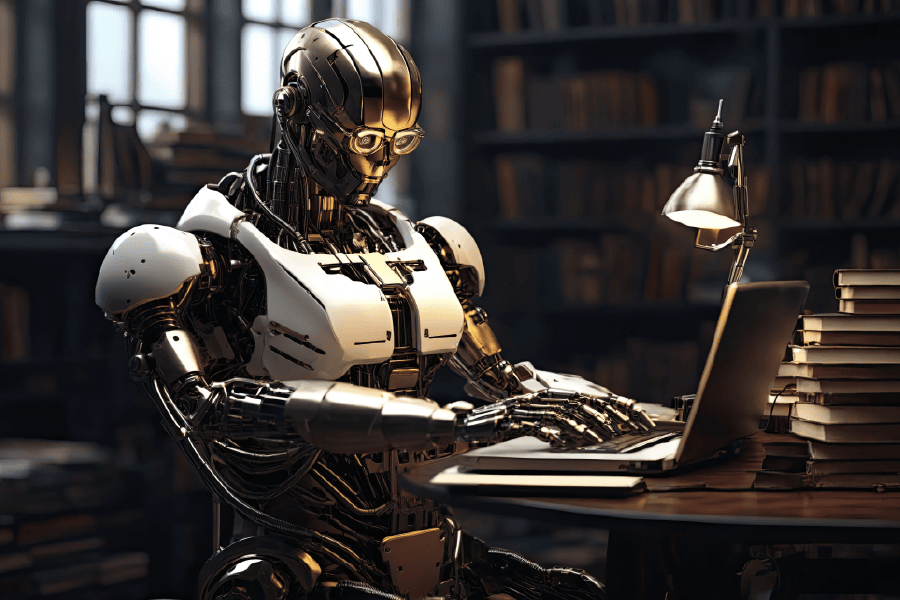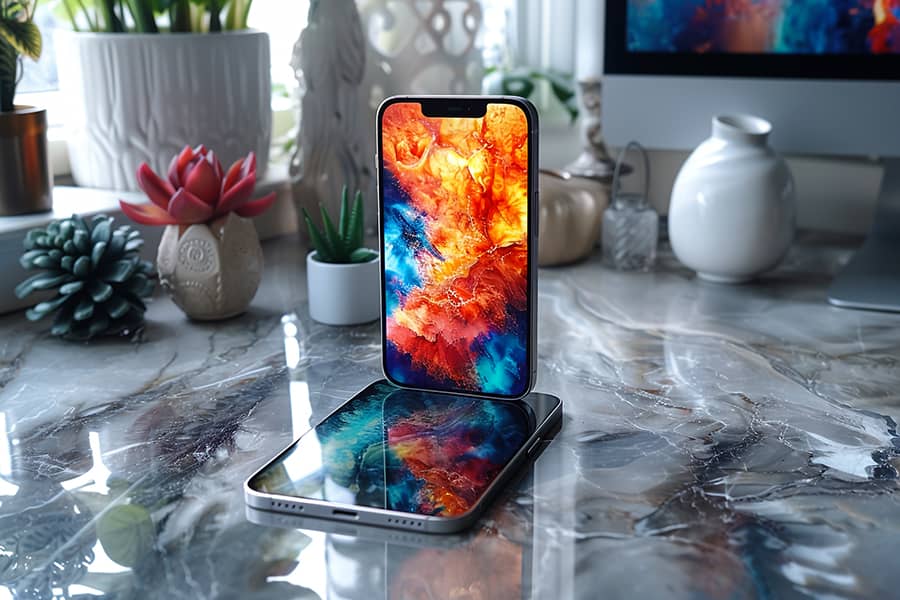ChatGPT excels at condensing the content of books. However, can we expect AI to create a genuine piece of literature one day?

The Intersection of AI and Literature
In the continuously changing realm of literature, the convergence of AI and storytelling reveals a myriad of opportunities. As algorithms dissect centuries of narrative forms and linguistic subtleties, we stand on the brink of a new literary dawn—where human imagination merges with machine intelligence. This partnership provokes significant inquiries about authorship and authenticity: can a machine genuinely grasp the emotional complexities that characterize human existence? Is it capable of recreating not only storylines but also the delicate weave formed by perspective, cultural background, and subconscious factors?
As AI resources become accessible to writers, they act as both assistants and creative reflections, mirroring our collective fixations and emotional landscapes. By producing content designed for heightened engagement or distilling intricate stories into more manageable formats, these innovations challenge conventional ideas of writing. However, this technological alliance invites examination—not just concerning its effects on creativity but also in how it transforms our comprehension of meaning within literature itself.
Understanding ChatGPT’s Content Condensation Capabilities
ChatGPT’s capacity to condense information arises from its advanced grasp of language patterns and contextual significance. By utilizing methods like summarization and thematic extraction, it can transform intricate narratives into clear, engaging summaries while preserving the core of the original content. This skill enables users to swiftly understand key concepts or themes within a text, making it an essential resource for students and busy professionals alike who value efficiency in reading.
Nonetheless, while ChatGPT shines in synthesizing pre-existing knowledge, there exists a gap between condensation and authentic literary creation. The subtleties of human emotion, cultural background, and personal experiences are often intricately embedded in writing—factors that AI has not yet fully mirrored. As we consider the future of AI-generated literature, it’s crucial to see that condensation might act as a bridge rather than an end point; by promoting deeper understanding of current works, tools like ChatGPT could foster more thoughtful engagement with texts instead of supplanting the artistry found in creative writing.
The Art of Literary Creation Explained
The craft of writing goes beyond simple words; it is a choreography between an author’s real-life experiences and the subtleties of language. At its essence, literature captures the intricacies of human feelings, culture, and creativity. While AI, such as ChatGPT, can adeptly summarize themes or devise plot twists grounded in existing frameworks, the subtlety arising from individual viewpoints remains largely unattainable for machine learning systems. One cannot ignore how authenticity—a fabric woven from silence, hardship, happiness, and reflection—breathes vitality into a story; this is an area where algorithms still struggle to replicate.
Additionally, literature frequently acts as a mirror that reveals societal realities or fictional worlds that push the boundaries of our perception of life itself. Can a machine truly understand the depth of irony born from generations of turmoil or convey subtleties through metaphor? The process of writing requires vulnerability—a readiness to unveil one’s inner self—and this openness fosters connections among readers that are deeply human.
Current Limitations of AI in Writing
Despite its remarkable abilities, AI still confronts substantial limitations that impede its capacity to create authentically artistic literature. One major hurdle exists in the domain of emotional richness and subtlety. Although AI can produce text that reflects certain stylistic qualities, it lacks a genuine comprehension of human experiences and emotions. This gap often leads to stories that seem empty or forced, failing to connect meaningfully with readers who desire deep connections through narratives.
Additionally, the creative process is inherently erratic—a signature of human creativity that resists predictable outcomes. AI functions mainly based on patterns absorbed from pre-existing writings, frequently resulting in the recycling of clichés or common motifs instead of generating fresh concepts or examining unconventional viewpoints. As a result, this opportunity for inventiveness gets constrained within the limits of algorithm-based creativity. It prompts a crucial inquiry: Can a machine genuinely embark on the reflective journey essential for literary creation? As we delve into these constraints, one fact remains evident—while AI may aid in content generation and boost efficiency.
Examples of AI-generated Texts Today
AI-generated writings today showcase an extraordinary fusion of ingenuity and technology, redefining our conception of literature. Platforms such as OpenAI’s ChatGPT are now producing poetry, short narratives, and even scripts that convey human-like emotions and intricate storytelling. For example, consider AI’s capacity to replicate diverse literary styles—from the graceful prose reminiscent of Jane Austen to the vivid imagery present in modern poetry. This adaptability prompts thought-provoking inquiries regarding authorship and originality in an era where machines can imitate human creativity.
Furthermore, AI’s involvement isn’t limited to mere text creation; it also extends into partnerships with renowned authors. Writers utilize AI as a brainstorming ally or a means to tackle writer’s block, demonstrating how technology can enhance human creativity rather than supplant it. This interaction encourages readers to envision scenarios where AI functions not only as a creator but also as a facilitator of literary exploration. As these narratives develop, one cannot help but contemplate whether these digitally produced works will stand alongside classic masterpieces or merely act as captivating experiments reflecting.
The Future of AI in Creative Writing
As we gaze toward the future of AI’s involvement in creative writing, it’s crucial to examine not only the technology itself but also its changing connection with human narrative. While present AI models like ChatGPT can produce believable text and imitate styles, they frequently lack the subtle grasp of human experience that truly connects with readers. The future might bring forth sophisticated algorithms capable of assessing emotional depth and context, potentially resulting in a deeper blend of machine-generated content and genuine storytelling.
Furthermore, the cooperative potential between writers and AI could transform our understanding of creativity. Envision a situation where authors utilize AI as a partner in their storytelling endeavors—employing it to brainstorm plots or flesh out characters based on rich psychological insights drawn from extensive literary archives. Such collaborations could merge technical expertise with human sentiment, paving the way for innovative genres or styles that remain to be discovered. This interaction between humans and machines could not only enrich literature but also challenge conventional ideas of authorship, encouraging readers to reconsider who—or what—can craft.
Conclusion: The Future Landscape of Literature
As we look toward the future of literature, it’s evident that the relationship between human creativity and artificial intelligence is transforming storytelling. AI tools, such as ChatGPT, have already proven their capability to simplify intricate narratives and concepts into user-friendly formats. Nevertheless, the core of authentic literature—empathy, depth, and emotional connection—remains an endeavor exclusive to humans. The true challenge isn’t whether AI can mirror these qualities but how it can enhance our creative efforts without eclipsing them.
The possibility for collaboration between authors and AI suggests a thrilling new model where writers utilize machine learning as a collaborator rather than a substitute. This partnership could yield innovative narrative forms and a multitude of voices arising from unforeseen origins. As technology progresses, so might our interpretations of authorship and creativity. Perhaps the future will showcase hybrid works that merge human-crafted prose with algorithmically produced content, generating immersive experiences where lines blur—a reflection of both our humanity and technological progress.
Recent Posts
-
Advice for achieving a healthier and more joyful lifestyle
September 16, 2024 -
Brazil: The premier location for thrilling adventures
September 14, 2024




